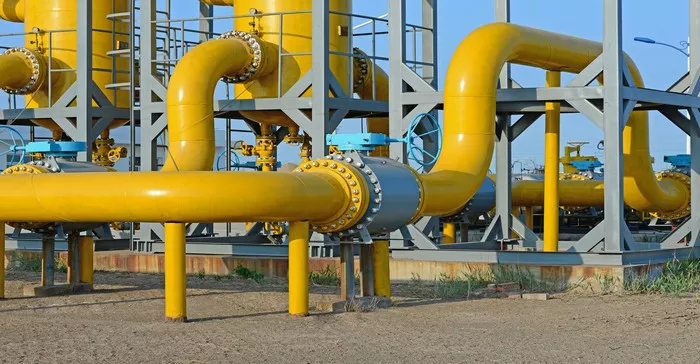Crude oil is a vital resource in the global economy, serving as a primary source of energy and raw materials for various industries. Understanding the chemical composition of crude oil is essential for its extraction, refining, and application. This article delves into the various chemicals found in crude oil, their properties, and their significance in industrial applications.
Introduction to Crude Oil
What is Crude Oil?
Crude oil is a natural, unrefined petroleum product that consists of hydrocarbon deposits and other organic materials. It is formed from the remains of ancient marine organisms that have undergone heat and pressure over millions of years. Crude oil is a complex mixture that can vary significantly in composition, depending on its geographical source and the geological conditions under which it was formed.
Importance of Crude Oil
Crude oil is one of the most crucial energy sources worldwide. It is refined into various products, including gasoline, diesel, jet fuel, heating oil, and petrochemicals, which are used to manufacture plastics, fertilizers, and other materials. The significance of crude oil extends beyond energy production; it plays a vital role in transportation, heating, and various industrial processes.
Chemical Composition of Crude Oil
The composition of crude oil is highly variable and can include thousands of different compounds. However, the primary components of crude oil can be categorized into hydrocarbons and non-hydrocarbon compounds.
Hydrocarbons
Hydrocarbons are organic compounds made up of hydrogen and carbon atoms. They are the primary constituents of crude oil and can be classified into three main categories:
1. Aliphatic Hydrocarbons
Aliphatic hydrocarbons are linear or branched chain compounds and can be saturated or unsaturated.
Saturated Hydrocarbons (Alkanes): Alkanes have only single bonds between carbon atoms. They can range from simple gases to complex liquids. Common alkanes found in crude oil include:
- Methane (C₁H₄): The simplest alkane, primarily found in natural gas.
- Ethane (C₂H₆): A two-carbon alkane, also found in natural gas.
- Propane (C₃H₈): Commonly used as fuel and in petrochemical production.
- Butane (C₄H₁₀): Used in lighters and as a fuel source.
Unsaturated Hydrocarbons (Alkenes and Alkynes): These compounds contain double or triple bonds. They are typically less stable than alkanes and are found in smaller quantities in crude oil.
- Ethylene (C₂H₄): A common alkenes used in plastic production.
- Acetylene (C₂H₂): A three-carbon alkyne used in welding and as a chemical feedstock.
2. Aromatic Hydrocarbons
Aromatic hydrocarbons contain one or more aromatic rings, which are cyclic compounds with alternating double bonds. They are characterized by their stability and unique properties. Common aromatic hydrocarbons in crude oil include:
Benzene (C₆H₆): A colorless liquid with a sweet odor, used as a precursor in various chemical productions.
Toluene (C₇H₈): A solvent and industrial feedstock.
Xylene (C₈H₁₀): Comprising three isomers (o-xylene, m-xylene, and p-xylene), used in the production of plastics and solvents.
3. Cycloalkanes (Naphthenes)
Cycloalkanes are saturated hydrocarbons with one or more rings in their structure. They are typically more stable than alkenes and are commonly found in crude oil. Some examples include:
Cyclohexane (C₆H₁₂): Used in the production of nylon and as a solvent.
Methylcyclopentane (C₇H₁₄): Found in gasoline and used as a solvent.
Non-Hydrocarbon Compounds
In addition to hydrocarbons, crude oil contains various non-hydrocarbon compounds that can significantly affect its properties and processing. These include:
1. Sulfur Compounds
Sulfur compounds in crude oil can lead to various problems during refining and combustion. Common sulfur compounds include:
Thiols (Mercaptans): Organic compounds containing sulfur that contribute to the foul odor of crude oil.
Thioethers: Compounds with sulfur atoms bonded to carbon atoms, present in smaller quantities.
Sulfides: Compounds containing sulfur that can contribute to the corrosiveness of crude oil.
2. Nitrogen Compounds
Nitrogen-containing compounds can affect crude oil quality and processing:
Pyridines: Aromatic compounds containing nitrogen that influence the acidity and corrosiveness of crude oil.
Quinoline: A bicyclic compound with nitrogen, found in certain crude oils.
3. Oxygen Compounds
Oxygen-containing compounds can influence the properties of crude oil:
Phenols: Aromatic compounds with hydroxyl groups that can affect the acidity of crude oil.
Carboxylic Acids: Organic acids containing a carboxyl group that contribute to the acidity of crude oil.
Ketones and Aldehydes: Carbonyl-containing compounds that can form during the degradation of organic matter.
4. Metals
Trace metals in crude oil can affect its processing and lead to operational issues:
Vanadium: Often found in heavy crude oils, it can lead to fouling and corrosion during refining.
Nickel: Commonly present in crude oil and contributes to corrosion issues.
Iron and Copper: Trace amounts of these metals can also be found in crude oil, affecting its quality and processing.
Variability in Crude Oil Composition
1. Types of Crude Oil
The composition of crude oil varies widely based on its origin. Generally, crude oil is classified into two categories:
Light Crude Oil: Contains a higher proportion of lighter hydrocarbons, resulting in lower density and higher API gravity. Examples include West Texas Intermediate (WTI) and Brent crude.
Heavy Crude Oil: Contains a higher proportion of heavier hydrocarbons, leading to higher density and lower API gravity. Examples include Canadian heavy crude and Venezuela’s Orinoco crude.
2. Geographical Variations
The chemical composition of crude oil is influenced by geographical and geological factors, such as the type of organic matter, sedimentation conditions, and the history of heat and pressure. Crude oil from different regions may have distinct chemical profiles:
Middle Eastern Crude: Typically light and sweet, containing low sulfur levels.
North American Crude: Can vary widely, with both light and heavy crude types available.
South American Crude: Often characterized by heavier grades with higher sulfur content.
See Also: What Percent of Crude Oil Is Used for Gasoline?
Extraction and Refining of Crude Oil
1. Extraction Methods
Crude oil is extracted using various methods, including:
Conventional Drilling: The most common method, where drilling rigs are used to access oil reservoirs.
Enhanced Oil Recovery (EOR): Techniques that increase oil recovery from reservoirs, such as thermal injection or gas injection.
Offshore Drilling: Extraction of oil from beneath the ocean floor using specialized platforms.
2. Refining Process
The refining process transforms crude oil into usable products through several stages:
Distillation: Crude oil is heated in a distillation column, separating it into various fractions based on boiling points.
Cracking: Heavier fractions are broken down into lighter hydrocarbons through thermal or catalytic cracking.
Reforming: Rearranging hydrocarbon molecules to improve the quality of gasoline and other products.
Hydrocracking: A combination of cracking and hydrogenation that converts heavy fractions into lighter products.
Applications of Chemicals in Crude Oil
1. Fuel Production
The primary application of crude oil chemicals is the production of fuels, including:
Gasoline: A light hydrocarbon blend primarily used in internal combustion engines.
Diesel: A heavier fuel used in diesel engines, commonly found in trucks and machinery.
Jet Fuel: Refined products specifically designed for aviation.
2. Petrochemical Industry
Crude oil serves as a feedstock for the petrochemical industry, producing:
Plastics: Derived from various hydrocarbons, including ethylene and propylene.
Fertilizers: Produced using ammonia and urea, which rely on petrochemical processes.
Synthetic Fibers: Such as nylon and polyester, derived from petrochemicals.
3. Industrial Applications
Chemicals derived from crude oil are used in various industrial applications:
Solvents: Such as toluene and xylene, used in paints, coatings, and adhesives.
Lubricants: Derived from refined crude oil, essential for machinery and automotive applications.
Asphalt: A byproduct of crude oil refining, used in road construction and roofing.
Environmental Impact of Crude Oil
1. Pollution and Emissions
The extraction and refining of crude oil can lead to environmental pollution. Common issues include:
Air Pollution: Emissions from refining and combustion contribute to smog and respiratory problems.
Water Contamination: Oil spills and runoff can harm aquatic ecosystems and drinking water sources.
2. Greenhouse Gas Emissions
The combustion of fossil fuels, including those derived from crude oil, contributes to greenhouse gas emissions. This has implications for climate change, as carbon dioxide (CO₂) and methane (CH₄) emissions increase global warming.
3. Mitigation Strategies
Efforts to reduce the environmental impact of crude oil include:
Cleaner Technologies: Advancements in refining processes to reduce emissions and waste.
Alternative Energy Sources: The development of renewable energy sources to decrease dependence on fossil fuels.
Regulatory Frameworks: Policies aimed at reducing pollution and promoting sustainable practices in the oil industry.
Conclusion
Understanding the chemical composition of crude oil is essential for its extraction, refining, and application. Crude oil primarily consists of hydrocarbons, including aliphatic, aromatic, and cycloalkane compounds, as well as non-hydrocarbon substances such as sulfur, nitrogen, and oxygen compounds. The variability in composition based on geographical location and type of crude oil influences its characteristics and usability.
As crude oil continues to play a vital role in the global economy, it is crucial to consider its environmental impact and explore sustainable alternatives. With ongoing advancements in technology and regulatory measures, the industry can work towards minimizing its footprint while meeting the world’s energy needs. Understanding the chemicals in crude oil not only informs better practices in the industry but also contributes to the overall knowledge of this essential resource.
Related topics:






























